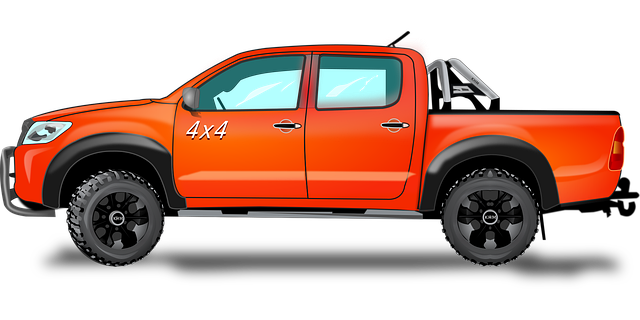Robust RGV (Rigid Large Vehicle) wheels and tires are key to effective recovery straps, offering superior traction and durability for navigating rugged terrain. Recovery straps distribute weight, protect undercarriage and wheels, extending tire lifespan. Choosing the right strap type (chain, cable, webbing) based on vehicle and task ensures optimal performance. Proper installation and regular inspections of high-quality RGV recovery straps maximize safety and reliability in critical situations. Investing in top-tier RGV wheels and tires enhances towing capacity and navigates challenging road conditions for off-road enthusiasts and professionals alike.
In today’s world, knowing how to handle wheel and tire repairs is crucial for any vehicle owner. This guide delves into the essential aspect of recovery straps, a versatile tool for maintaining RGV (recovery-oriented vehicle) wheels and tires. Understanding the role of these straps in various situations can enhance safety and efficiency during emergencies. From choosing the right type to mastering effective usage, this article covers all you need to know about leveraging high-quality RGV recovery straps.
- Understanding RGV Wheels and Tires: A Brief Overview
- The Role of Recovery Straps in Wheel and Tire Maintenance
- Types of Recovery Straps: Which One is Right for You?
- How to Effectively Use Recovery Straps for Wheel and Tire Repair
- Benefits of Investing in High-Quality RGV Recovery Straps
- Common Mistakes to Avoid When Using Recovery Straps
Understanding RGV Wheels and Tires: A Brief Overview

Recovery straps rely on sturdy wheels and tires to navigate rugged terrain effectively. Understanding RGV (Reciprocating Geared Vehicle) wheels and tires is crucial for optimal performance during recovery operations. These specialized vehicles are designed with robust wheels equipped to handle diverse surfaces, from muddy tracks to rocky slopes, ensuring stable movement.
RGV wheels and tires are engineered for durability and traction. The tires are often made with deep treads that bite into terrain, providing excellent grip. Additionally, the wheels themselves may incorporate specific features like reinforced construction and specialized bearings to withstand extreme conditions. This combination enhances recovery efficiency, allowing operators to confidently tackle challenging rescue scenarios.
The Role of Recovery Straps in Wheel and Tire Maintenance

Recovery straps play a pivotal role in maintaining the health and longevity of your RGV wheels and tires. These robust, specialized tools are designed to support and stabilize vehicles during challenging recovery situations, especially when a tire is damaged or deflated. By distributing the vehicle’s weight evenly across multiple points, recovery straps prevent further damage to the undercarriage and wheels, allowing for safe towing and transport without putting excessive strain on any single point of contact.
Moreover, they are an indispensable aid in RGV wheel and tire maintenance routines. Regular use ensures that tires are handled with care, minimizing the risk of sidewall damage or misalignment. This proactive approach to recovery not only extends the lifespan of your tires but also contributes to overall vehicle safety, ensuring that your wheels remain in top condition for optimal performance on the road.
Types of Recovery Straps: Which One is Right for You?

When it comes to choosing the right recovery strap for your needs, understanding the variety available is key. Recovery straps are essential tools for RGV wheels and tires, offering a secure way to tow or lift vehicles in various situations. They come in different types, each suited for specific tasks and vehicle types.
One common type is the chain recovery strap, ideal for heavy-duty applications due to its strength and durability. These straps are perfect for towing large vehicles or those with low ground clearance. On the other hand, cable recovery straps offer a lightweight alternative, suitable for smaller vehicles and off-road adventures. They are flexible and can reach tight spots, making them a favorite among outdoor enthusiasts. Additionally, there are webbing recovery straps known for their strength and ability to distribute weight evenly, making them versatile for various recovery scenarios involving RGV wheels and tires.
How to Effectively Use Recovery Straps for Wheel and Tire Repair

When it comes to wheel and tire repair, recovery straps are an essential tool for RGV (rigid, large vehicles) owners. These robust pieces of equipment enable efficient and safe temporary fixes on the side of the road or in remote areas where immediate assistance is needed. To make the most of them, ensure proper installation: secure the strap tightly around the damaged wheel, creating a stable, sturdy support. The other end should be fastened to a solid, immovable object like a tree, post, or another vehicle for maximum stability and strain relief during repair work.
For optimal performance, choose straps specifically designed for RGV wheels and tires, considering factors like weight capacity, material strength, and weather resistance. Regularly inspect your recovery straps for any signs of wear and tear to ensure their reliability in critical situations. Proper use of these tools can significantly reduce downtime and enhance safety during repairs, making them a valuable addition to any RGV owner’s emergency kit.
Benefits of Investing in High-Quality RGV Recovery Straps

Investing in high-quality RGV (recovery vehicle) recovery straps is a smart decision for anyone who values reliability, safety, and performance when it comes to their wheels and tires. These specialized straps are designed to handle the toughest recovery situations, ensuring your peace of mind on the road. With superior strength and durability, they can support heavy loads without compromising integrity, making them essential tools for off-road enthusiasts, fleet managers, and emergency services.
High-quality RGV recovery straps offer numerous advantages. They enhance towing capacity, allowing you to recover vehicles safely in various terrains. Their robust construction resists wear and tear, ensuring longevity and maintaining performance over time. Moreover, these straps often come with advanced features like reinforced hooks and adjustable designs, making them versatile for different wheel and tire sizes. By choosing top-tier RGV wheels and tires, you gain a reliable partner for navigating challenging road conditions, ultimately saving time and money in the long run.
Common Mistakes to Avoid When Using Recovery Straps

When using recovery straps, especially with RGV wheels and tires, there are several common mistakes that users often make. One of the most prevalent is underestimating the load capacity of the straps. It’s crucial to understand the manufacturer’s specifications and never exceed the recommended weight limit. Overloading can lead to strap failure, posing a significant safety risk during towing or recovery situations.
Another mistake is neglecting proper installation. Straps should be securely fastened to both the vehicle and the object being recovered, ensuring they remain tight and stable during transport. Inadequate installation can result in slippage, which could cause damage to tires and wheels, including those from RGV manufacturers, and compromise overall control. Always follow the guidelines provided by the manufacturer for optimal strap placement and tensioning techniques.
Recovery straps are an indispensable tool for maintaining and repairing RGV wheels and tires. By understanding their role, choosing the right type, and mastering proper usage techniques, you can ensure efficient and effective wheel and tire care. Investing in high-quality RGV recovery straps offers numerous benefits, including enhanced safety, reduced repair times, and cost savings. Avoid common mistakes like misusing or overloading straps to maximize their lifespan and effectiveness. Stay ahead of maintenance needs and keep your vehicles running smoothly with these versatile tools.



